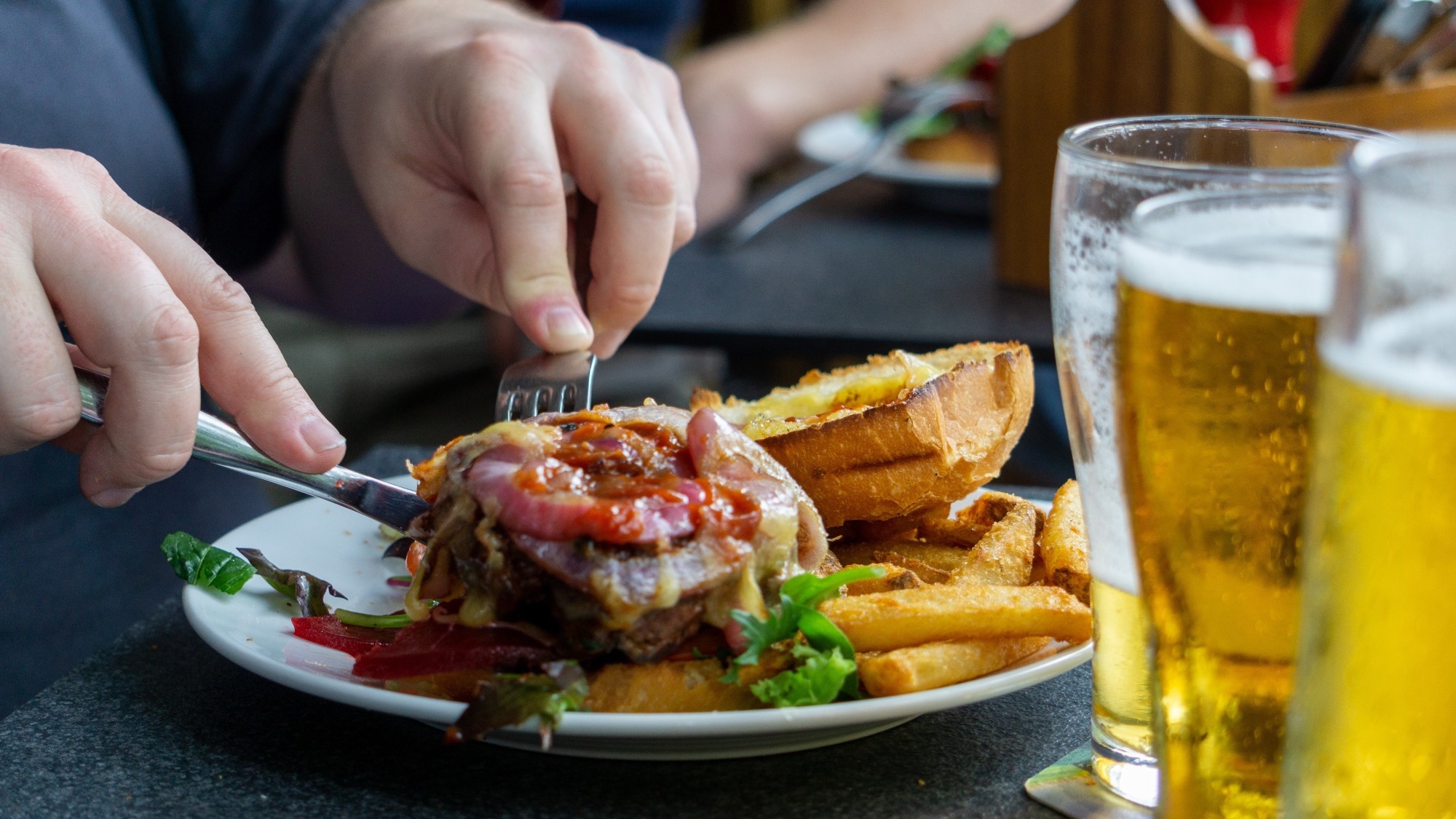A Brazilian study reveals that promoting fruit and vegetable intake alone may not be enough to curb weight gain, as ultra-processed foods continue to play a major role in obesity trends.
Study: The Results of Ultra-Processed Food Consumption on Weight Change: A Randomized Controlled Community Trial in a Health Promotion Program. Image Credit: designium/Shutterstock.com
In a recent study published in Nutrients, researchers explored the impact of a nutritional intervention on ultra-processed food (UPF) consumption and changes in people’s body weight in Brazil.
Their findings contribute to an increasing body of evidence that UPF consumption may lead to obesity.
Background
Global health experts warn that we are facing an obesity epidemic, with over one billion obese people in the world at higher risk of developing several chronic conditions.
Consuming UPFs, often calorie-rich but nutrient-poor, is implicated in weight gain and could facilitate obesity; it is associated with body mass index (BMI) changes in many countries, including Brazil.
The Nova system, used to classify foods into four groups, defines a UPF as a product that is entirely or mostly formulated from ingredients not used in home-cooked dishes.
In this system, UPFs include pre-prepared shelf-stable or frozen dishes, packaged snacks, and soft drinks. Processed foods include canned fruit and other foods and cheese. Processed culinary ingredients include salt, sugar, and oils, while minimally processed or unprocessed foods include meat, pasteurized milk, grains, vegetables, and fruits.
To promote healthy exercise habits and reduce obesity, the primary health care (PHC) system in Brazil provides physical education and training at no cost to vulnerable populations.
A nutritional intervention promoting the consumption of vegetables and fruits was implemented in some centers. Exploring the impact of this program offers valuable insights into effective ways to reduce UPF consumption and its impacts on body weight changes.
About the study
The research team used data from a randomized controlled trial, including a representative sample of healthcare services in Brazil conducted from 2013 to 2017. The study’s sample included 18 centers, nine of which were assigned to the nutrition intervention group, with the others serving as controls.
Participants included people over 20 who attended physical activities at PHC centers, excluding those who had cognitive impairments or were pregnant. Participants in both intervention and control groups attended routine services provided by the PHC center, including light exercise for an hour thrice a week.
Additionally, those at PHC centers in the intervention group received informational materials and postcards and participated in workshops, group sessions, education panels, cooking competitions, and movie screenings designed to encourage them to increase their intake of fruits and vegetables.
Data was collected at the beginning of the program and after 12 months through in-person interviews.
At baseline, participants provided information about their age, sex, income, occupation, marital status, and education.
They described their perceptions about their health, level of physical activity, how long they had attended sessions at the PHC center, and any previous attempts at losing weight. Their weight was measured at this time and re-measured after 12 months.
At baseline, participants were also asked to recall what they had eaten and drunk in the past 24 hours and in what quantity, both at home and otherwise, and to describe food preparation at home.
The reported food quantities were converted into uniform measurements and categorized according to the Nova system.
The change in body weight, obtained by subtracting the weight at baseline from that measured during the follow-up, was the outcome of interest. Statistical models were used to assess UPF’s contribution to the diet and how it varied based on different population characteristics.
Researchers also explored whether the average change in weight among people in the intervention group significantly differed from this in the control group and the relationship between UPF consumption and weight changes.
Findings
The intervention group comprised 1483 participants, while the control group included 1931. Of the 3414 individuals who took part in the study, approximately 88% were female, and the average age was 56.7 years.
Participants had studied for an average of 7.2 years and had participated in physical exercise activities for a mean of 19.7 months. Over 60% reported recently trying to lose weight.
At baseline, people in the lowest quartile of UPF consumption obtained approximately 9.7% of their calories from UPFs, while for those in the highest, UPFs account for about 47.7% of calories. There was no difference between intervention and control groups.
People in the control group who consumed more UPFs were older, had more education and higher incomes, and had been participating in PHC activities for longer but were less likely to report trying to lose weight.
Those who consumed more UPFs showed greater weight variations than those who consumed the least, with no significant differences between intervention and control.
Conclusions
Researchers found no evidence that the nutrition intervention led to lower weight gain, even though participants in the intervention increased their intake of vegetables and fruits.
It is possible that participants did not reduce UPF intake as these foods can be highly addictive and are marketed aggressively. These findings add to an increasing body of evidence linking UPFs to increases in weight.
Source link : News-Medica

